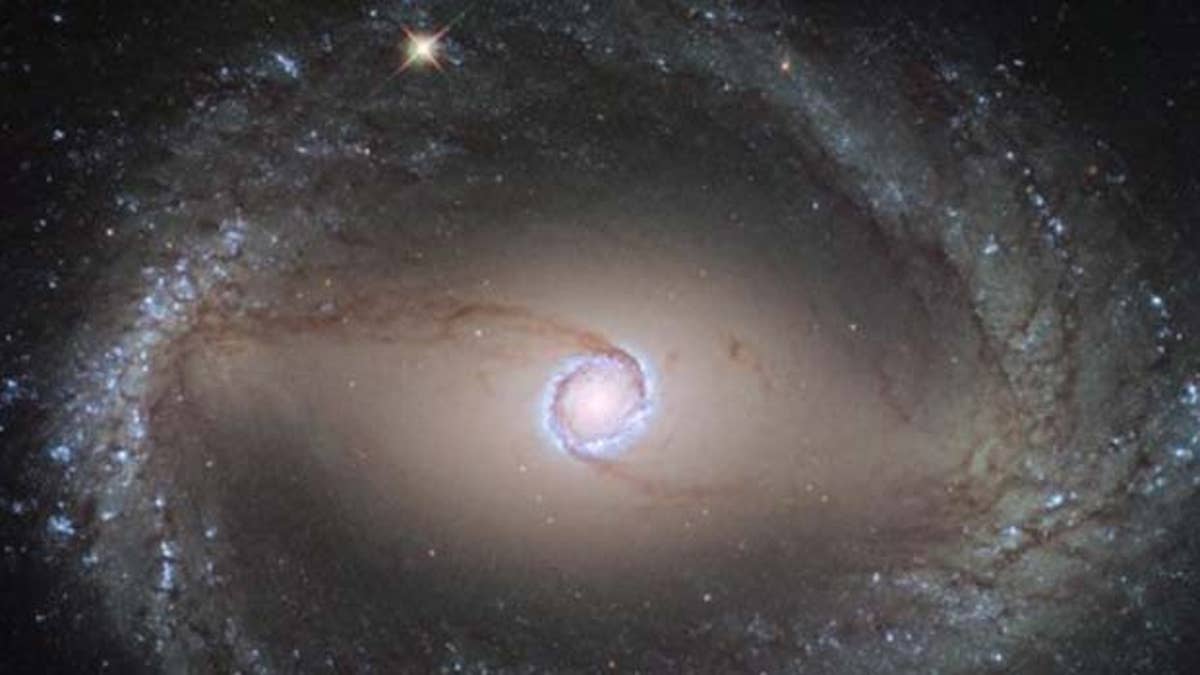
The Hubble Space Telescope was used to capture imagery of spiral galaxy NGC 1512. (ESA/Hubble, NASA)
The Hubble Space Telescope has taken a close look at the fascinating gravitational effects caused by a diminutive dwarf galaxy as it orbits its massive neighbor. The galactic pair will eventually merge, with the dwarf being eaten — but it's not going down without a fight.
NGC 1512 is a colossal barred spiral galaxy containing billions of stars, plus active regions of star formation. Hubble, a joint project of NASA and the European Space Agency, can easily detect star formation in the galaxy's outer ring. That region is dotted with many blueish HII-emission regions, meaning that blasts of powerful radiation coming from nearby young stars are ionizing the clouds of hydrogen gas. In this observation of NGC 1512, however, the bright blue inner hub of star formation takes center-stage.
Known as a "circumnuclear starburst ring," this intense star-formation region measures 2,400 light-years across. It is fed by a conveyor belt of gas streaming down the two prominent bars from the galaxy's outer rim to the galactic core (hence the "barred spiral galaxy" designation). Astronomers think that the 400-million-year-old gravitational battle between NGC 1512 and its tiny buddy, NGC 1510 (on the right in the image), is driving the massive galaxy's gas supply and starburst ring, researchers said in a statement.
Although NGC 1510 seems to be holding its own against its neighboring gravitational bully, the unfortunate dwarf galaxy faces the beginning of the end. Already, the bigger galaxy's gravity is dragging extended tendrils of gas from the tiny galaxy, and NGC 1510's stars will eventually assimilate with NGC 1512's stellar metropolis. Astronomers know this because 2015 observations of the massive galaxy revealed that the outer regions of NGC 1512's spiral arms once belonged to another galaxy, one that was cannibalized and ingested — a grim fate that also awaits NGC 1510. But in the cosmic ecosystem, this is the galactic cycle of life.
Although the doomed dwarf galaxy is small, it has a big impact on its larger companion, the statement said. Observations of these effects will help astronomers learn more about the dramatic consequences galactic mergers have for star formation in massive galaxies, according to the statement.
Note: Space.com senior producer Steve Spaleta contributed to this report.
Follow Ian O'Neill @astroengine . Follow us @Spacedotcom , Facebook or Google+ . Originally published on Space.com .




















